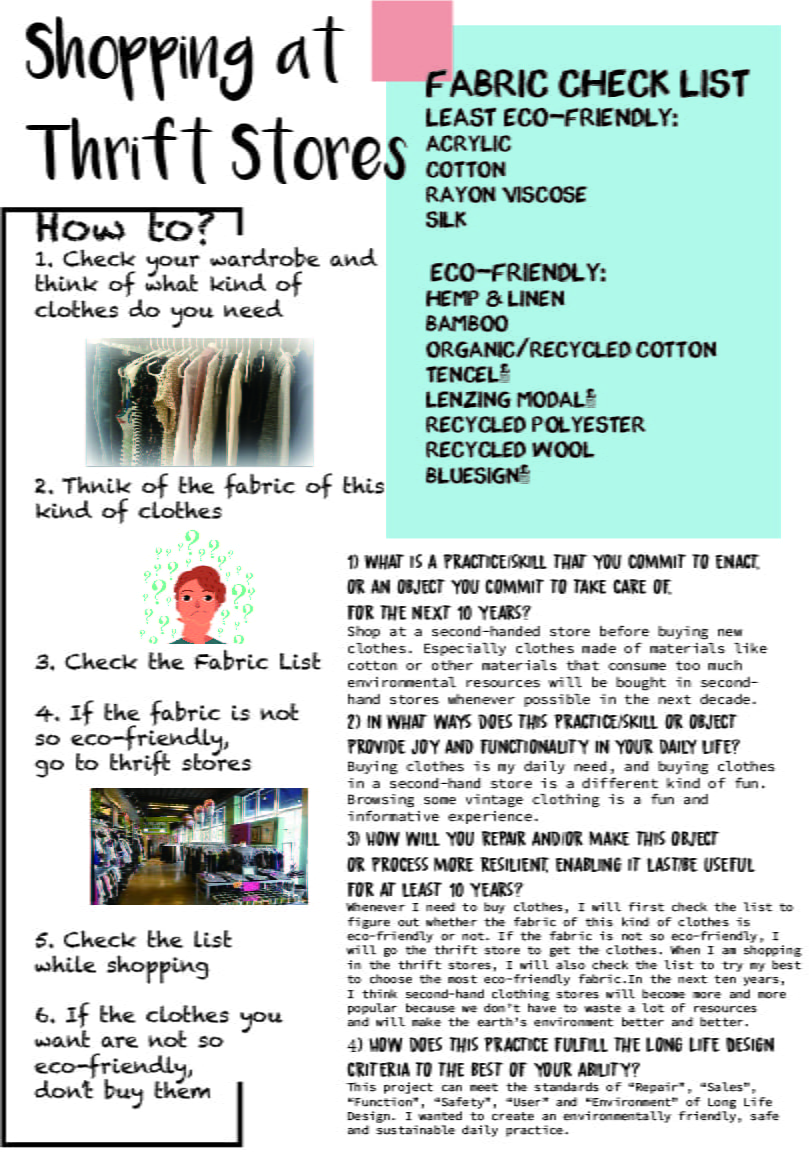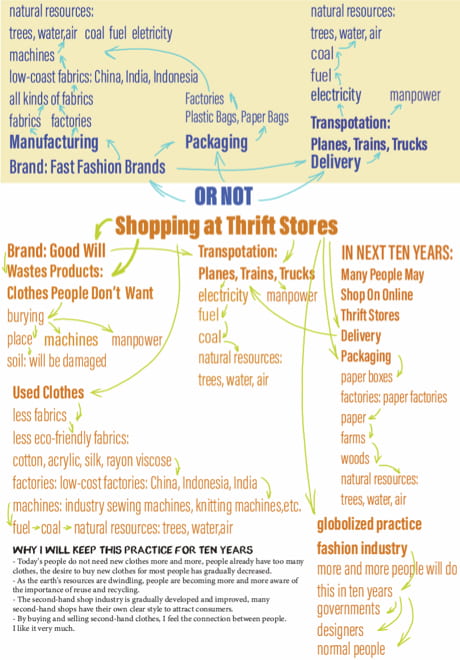1) LONG LIFE DESIGN
Practice: Shopping at Thrift Stores
- Shop at a second-handed store before buying new clothes. Especially clothes made of materials like cotton or other materials that consume too much environmental resources will be bought in second-hand stores whenever possible in the next decade.
- Buying clothes is my daily need, and buying clothes in a second-hand store is a different kind of fun. Browsing some vintage clothing is a fun and informative experience.
- Whenever I need to buy clothes, I will first check the list to figure out whether the fabric of this kind of clothes is eco-friendly or not. If the fabric is not so eco-friendly ( such as cotton based fabrics), I will go the thrift store to get the clothes. When I am shopping in the thrift stores, I will also check the list to try my best to choose the most eco-friendly fabric.In the next ten years, I think second-hand clothing stores will become more and more popular. Rather than to buy new clothes, buy second-hand clothes has many advantages, animal or plant fiber, they need to make their clothes need to use a large amount of water, dye will pollute rivers, and to buy second-hand clothes don’t need these waste or pollution, if more and more people buy clothes made of materials like cotton or other materials that consume too much environmental resources will be bought in second-hand stores whenever possible in the next decade to affect the earth’s environment and resources, and don’t have to waste a lot of water resources, water pollution, there will be no more will make people have more water available in the future. And not a lot of resources to grow plants to make new cloth, it will also save more resources, in the future to make the earth’s environment better and better.
- This project can meet the standards of “Repair”, “Sales”, “Function”, “Safety”, “User” and “Environment” of Long Life Design. I wanted to create an environmentally friendly, safe and sustainable daily practice that consumers could understand why they were doing it.
2) DESIGN BRIEF POSTER



